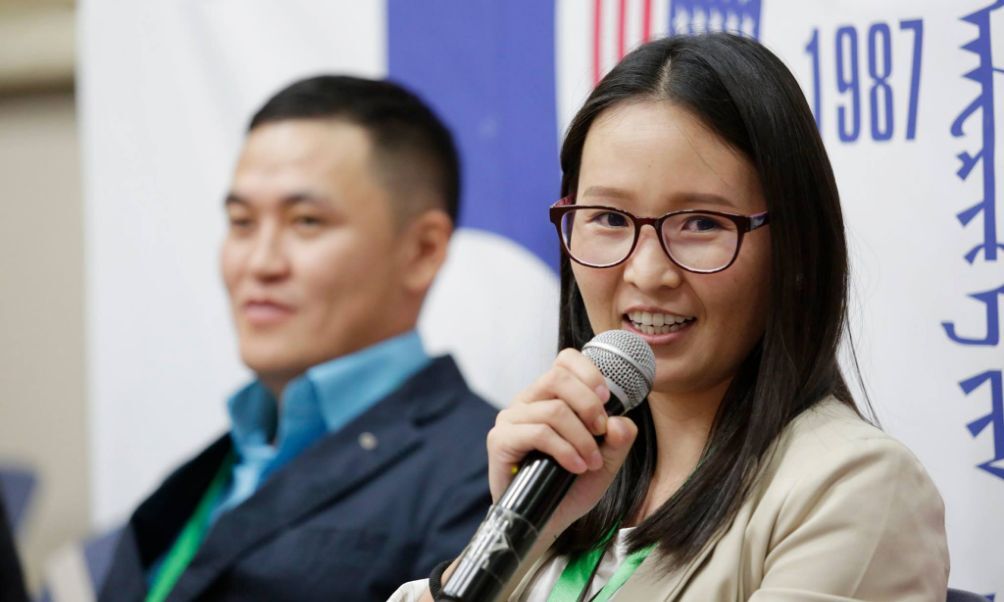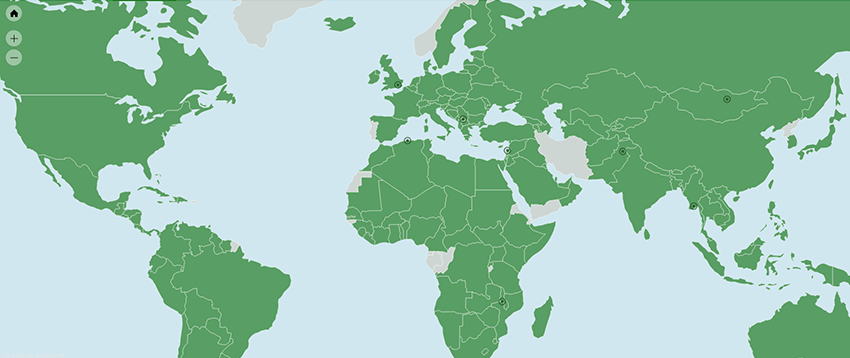-
What We Do
- WHERE WE WORK
-
About Us
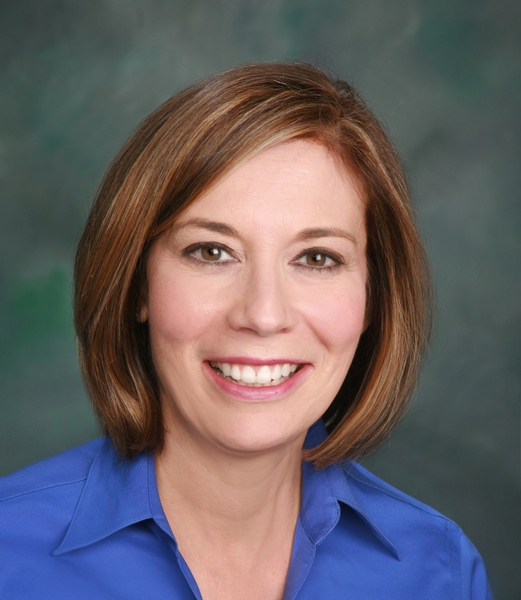 Welcome Message from Carol Jenkins
Welcome Message from Carol JenkinsFor more than 90 years, World Learning has equipped individuals and institutions to address the world’s most pressing problems. We believe that, working together with our partners, we can change this world for the better.
On my travels, I’ve had the opportunity to meet with many of those who have joined us in this mission. In Baghdad, we’ve trained more than 2,300 Iraqi youth who are already giving back at home. In London, our partners in the TAAP Initiative strongly believe that we are all responsible to practice inclusion. And in Vermont, our Experiment in International Living and School for International Training participants prove every day that they have the tools and the determination to change the world.
Please join us in our pursuit of a more peaceful and just world.
- Get Involved
Media Center > Story
World Learning Launches Global Literacy MOOC: Teaching Struggling Readers Around The World
March 11, 2019
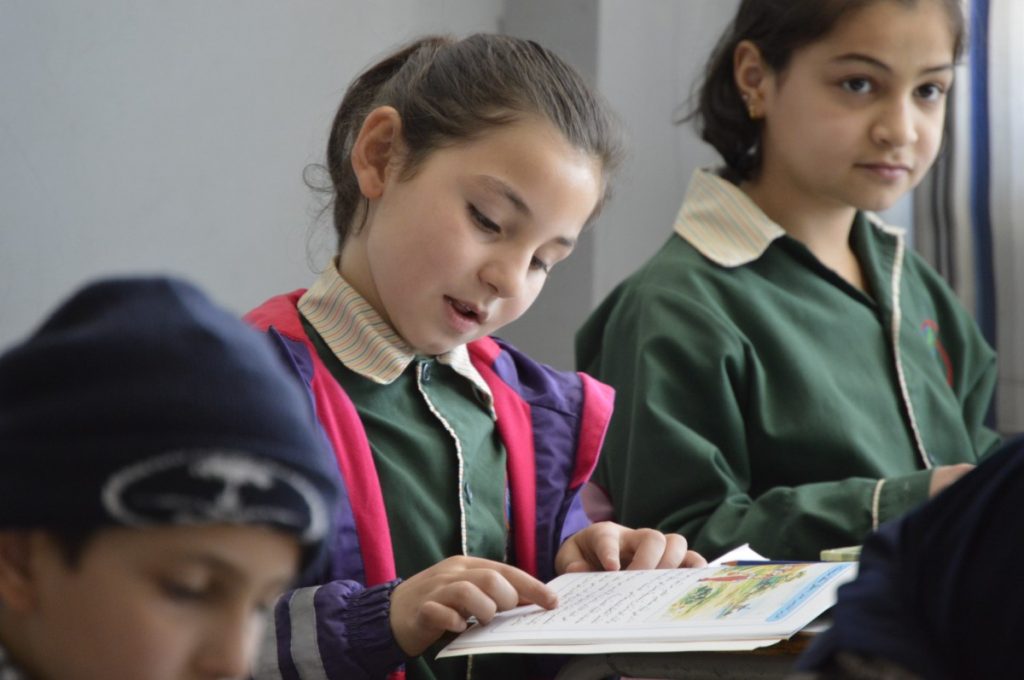
Launching March 11 on the Canvas platform, Teaching Struggling Readers Around the World is World Learning’s latest MOOC (Massive Open Online Course). It was developed in collaboration with The Chinese University of Hong Kong. The MOOC is designed to help teachers, parents, caregivers and other interested parties anywhere in the world teach children to read not only in English, but in any language.
According to UNICEF, over the past two decades, global youth literacy rates have increased from 83 percent to 91 percent. But regional and gender disparities persist. Literacy is lowest in the least developed countries and higher among males than females. The most recent data shows that young women account for 59 percent of the total illiterate youth population.
There’s a lot of catching up to do. For instance, in sub-Saharan Africa, nine out of 10 children — about 202 million — lack basic reading skills, according to a U.N report. Similarly, in central and southern Asia, 81 percent of children —a whopping 241 million — lack basic reading skills.
Tackling illiteracy is key to global development. Research shows reading skills are foundational to the quality of an individual’s daily life, educational achievement, and career advancement. But literacy — or lack thereof — also has serious collective consequences. Economic growth is stymied when people can’t read. It’s that simple.
When children learn to read, they have access to information, quality education and better work opportunities, which gives them a greater stake in their communities as adults and ultimately leads to economic and political stability. That’s why World Learning facilitates the Quality Instruction towards Access and Basic Education Improvement (QITABI) project in Lebanon — providing key educational resources to enhance reading instruction and learning for some 43,000 students — in addition to literacy programs in other countries.
World Learning’s approach to early grade reading builds on evidence from the Balanced Literacy Approach — a framework consisting of five components including read aloud, guided reading, shared reading, independent reading, and word study — and adapts it to the needs of low and middle income countries.
Dr. Kara McBride, an Education Program specialist at World Learning, headed the team that developed the organization’s new MOOC. She is an expert in teacher training, educational technology, and language acquisition, and has worked on projects in Lebanon, the West Bank and Gaza, Iraq, and Kosovo. We talked with Dr. McBride to about her latest project.
Teaching struggling readers around the world — World Learning’s third MOOC–is the outgrowth of a number of previous online literacy programs. In what way is this MOOC different from online programs?
MOOCs differ from online courses in a number of ways. An online course is limited in size and has an instructor. Participants turn in homework and the instructor gives feedback and offers direction in online discussions.
A MOOC is massive; it’s a resource available to an unlimited number of people. There’s no instructor giving intensive feedback, instead they rely on facilitators. To design a good MOOC, you have to present the information in a lively and compelling manner and create interactive opportunities.
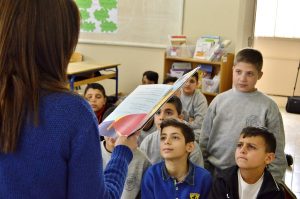 We tested a lot of the material for this MOOC in our online programs and got useful feedback that we were able to incorporate. Our pictures and animations better illustrate the main points of the stories, and we simplified the language so that participants with weaker English can still benefit from the ideas, techniques, and material presented.
We tested a lot of the material for this MOOC in our online programs and got useful feedback that we were able to incorporate. Our pictures and animations better illustrate the main points of the stories, and we simplified the language so that participants with weaker English can still benefit from the ideas, techniques, and material presented.
For this literacy MOOC, there will be a lead facilitator as well as volunteer facilitators who will be present for online discussions. The lead facilitator will collect information from the message boards and put out a weekly note summarizing the main issues people discussed in the module and offer additional resources on the topic. The facilitator acts as a guide, keeping things focused and relevant.
Also, typical online programs cost money, but MOOCs are always free to participants.
Nearly 15,000 people signed up for our recent MOOC. Because they are free, MOOCs tend to have a lower retention rate and not a lot of participants complete the entire course. However, our previous MOOCs had an unusually high completion rate.
There are other literacy MOOCs available. What are some of the features that make this one special?
It’s easily accessible, free, and works on cellphones. That’s important when you’re trying to reach people in the developing world. It’s designed for people with low internet access. The video component, for instance, is there but it’s not mandatory to the success of the participant. We include a PDF with all the same information to download and use later. Participants can use all the material in the MOOC in any way they want because of our intentionally unrestrictive licensing agreement. It’s all open source. We licensed the content with Creative Commons as CC BY 4.0, which allows anyone to copy and redistribute the material in any format. Anyone can use it as long asthey cite World Learning.
How was Teaching Struggling Readers Around The World developed with a global audience in mind?
A group of experts in literacy, headed by Dr. Catherine McBride at The Chinese University in Hong Kong, developed this MOOC. All techniques presented in the MOOC are evidence-based.
 Probably the most innovative thing about Teaching Struggling Readers Around the World is that it looks at what teaching techniques are effective across languages, not just in English or in alphabetic languages, and it guides participants on how to adapt activities to their children’s needs.
Probably the most innovative thing about Teaching Struggling Readers Around the World is that it looks at what teaching techniques are effective across languages, not just in English or in alphabetic languages, and it guides participants on how to adapt activities to their children’s needs.
Most of the world is multilingual. Outside the U.S., most people speak more than one language. Sometimes reading educators find themselves teaching children to read in languages that are not their native tongue, which can be challenging. There are huge differences between languages that can impact how you teach a child to read. Different techniques may be required depending on the language. This MOOC helps reading teachers understand the differences. It is designed to account for the variations of languages and is applicable to reading instructors who teach children how to read, regardless of the language.
Your expertise is second-language acquisition. What was your role in developing this program?
I have experience developing online courses. My role was working with the team of researchers, taking academic texts and making them fun and easy to read.
You noted other MOOCs have a low rate of completion. What are some of the elements of this MOOC to help teachers get to the finish line?
There’s a big interactive aspect to this course that keeps things flowing well. Most readings are accompanied by animated video or offer other visuals to help participants absorb information. Almost every reading includes an activity and a thoughtful multiple-choice quiz to make sure the information is fully understood. We found clever ways to present questions to make people think deeply about the material. The quiz doesn’t just spit out an individual grade but, more importantly, includes feedback so it’s clear why an answer was wrong — and when the answer is right it reinforces why it was correct and ties it in with major course themes.
Just to recap, registration for Teaching Struggling Readers Around The World is open now, it’s free for anyone to participate and it launches March 11. Anything else?
The course is five modules in five weeks. Participants can expect to spend three to four hours a week on each module. It’s written in clear, easy to understand English, so everyone knows what they are supposed to do, even if they don’t speak English so well. It’s self-paced.We are releasing one module at a time, so people engage with each other. We really want participants to interact. There will be discussion forums and thought-provoking questions to encourage people to share ideas. We’ll leave the program open two more weeks so if something comes up, they have additional time to finish the course.
Is there any special recognition for completing this MOOC?
If you finish all five modules you get a certificate you can print and an electronic badge. The electronic badge uses blockchain to verify someone satisfied all the requirements.

